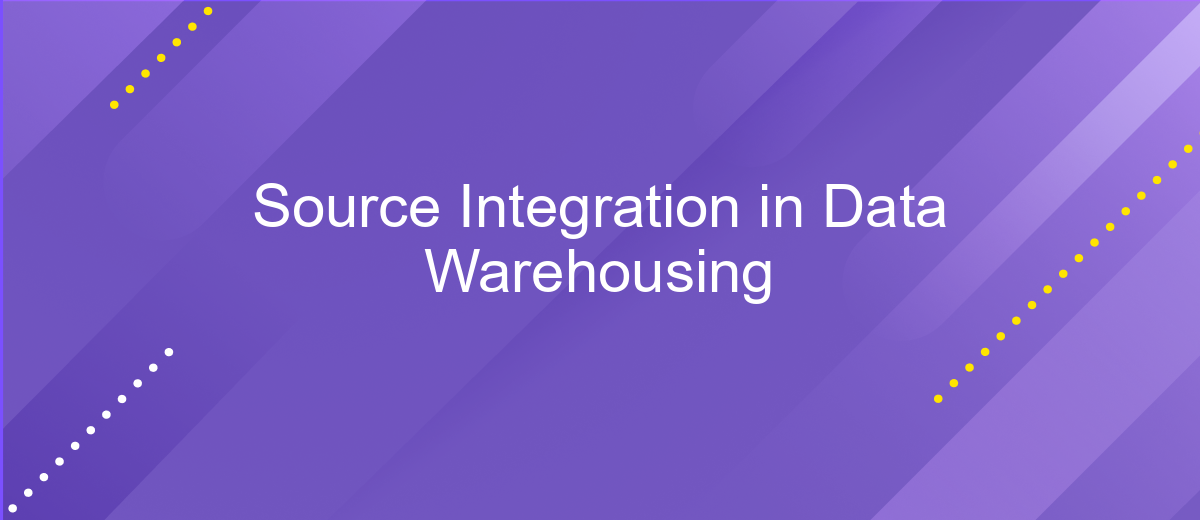Source Integration in Data Warehousing
Source integration in data warehousing is a critical process that involves consolidating data from diverse sources into a single, unified repository. This practice enhances data accessibility, consistency, and analysis, enabling organizations to make informed decisions. By integrating various data sources, businesses can streamline operations, improve data quality, and gain comprehensive insights, ultimately driving strategic growth and efficiency.
Introduction
In the ever-evolving landscape of data management, data warehousing has become a cornerstone for businesses aiming to harness the power of their data. One of the critical aspects of data warehousing is source integration, which involves consolidating data from various sources into a single, unified repository. This process is essential for ensuring data consistency, accuracy, and accessibility, enabling organizations to make informed decisions based on comprehensive datasets.
- Enhancing data quality by eliminating redundancies and inconsistencies.
- Streamlining data access and retrieval processes for better efficiency.
- Facilitating advanced analytics and business intelligence applications.
- Providing a centralized platform for data governance and compliance.
Effective source integration is not without its challenges, including data heterogeneity, volume, and security concerns. However, with the right strategies and technologies, organizations can overcome these obstacles and achieve seamless integration. This section delves into the methodologies, tools, and best practices that can help businesses successfully integrate diverse data sources into their data warehouses, paving the way for enhanced operational and strategic capabilities.
Challenges of Source Integration

Integrating diverse data sources into a data warehouse presents several challenges. One of the primary issues is data inconsistency, as different sources may store similar data in varying formats, leading to discrepancies and inaccuracies. Ensuring data quality and consistency requires rigorous data cleansing and transformation processes. Moreover, handling large volumes of data from multiple sources can strain system resources and complicate the integration process, necessitating robust data management and storage solutions.
Another significant challenge is the complexity of real-time data integration. Synchronizing data from disparate systems in real-time demands efficient and scalable integration tools. Services like ApiX-Drive can facilitate this by providing automated workflows that streamline data transfer between applications, reducing manual intervention and errors. Additionally, maintaining data security and compliance across various sources requires stringent access controls and monitoring mechanisms to protect sensitive information and adhere to regulatory standards.
Approaches to Source Integration

Source integration in data warehousing involves consolidating data from various sources into a single, unified system. This process ensures that the data is consistent, accurate, and readily available for analysis. Effective source integration enhances data quality and supports better decision-making within organizations.
- ETL (Extract, Transform, Load): This approach involves extracting data from different sources, transforming it into a suitable format, and loading it into the data warehouse.
- ELT (Extract, Load, Transform): In this method, data is first extracted and loaded into the data warehouse, and then the transformation process is applied.
- Data Virtualization: This technique allows for real-time data integration without the need to move data physically. It provides a virtual view of the data from multiple sources.
Each of these approaches has its own advantages and use cases, depending on the specific needs and infrastructure of the organization. Choosing the right method is crucial for ensuring the efficiency and reliability of the data warehousing process.
Data Integration Tools

Data integration tools play a crucial role in the efficient and seamless integration of diverse data sources into a data warehouse. These tools are designed to extract, transform, and load (ETL) data from various sources, ensuring consistency and reliability throughout the process. By utilizing data integration tools, organizations can achieve a unified view of their data, enabling better decision-making and analytics.
There are numerous data integration tools available in the market, each offering unique features and capabilities. The choice of tool often depends on specific organizational needs, data complexity, and existing infrastructure. Some of the most widely used data integration tools include:
- Informatica PowerCenter
- Talend Open Studio
- Microsoft SQL Server Integration Services (SSIS)
- Apache Nifi
- IBM InfoSphere DataStage
Choosing the right data integration tool is essential for the successful implementation of a data warehouse. It not only simplifies the integration process but also enhances data quality and consistency. Organizations should evaluate their requirements and consider factors such as scalability, ease of use, and support when selecting a data integration tool to ensure optimal performance and efficiency.


Conclusion
In conclusion, source integration in data warehousing plays a pivotal role in ensuring seamless data flow and consistency across various systems. By consolidating data from different sources, organizations can achieve a unified view of their operations, which is crucial for informed decision-making and strategic planning. The integration process, while complex, can be significantly streamlined using advanced tools and platforms designed for this purpose.
One such platform, ApiX-Drive, offers robust solutions for automating data integration tasks, reducing the need for manual intervention, and minimizing errors. By leveraging ApiX-Drive, businesses can efficiently connect disparate data sources, ensuring real-time data synchronization and enhancing overall data quality. Ultimately, effective source integration not only improves operational efficiency but also empowers organizations to harness the full potential of their data assets.
FAQ
What is source integration in data warehousing?
What are the common challenges faced during source integration?
How can I automate the process of source integration?
What types of data sources can be integrated into a data warehouse?
How do I ensure data quality during source integration?
Time is the most valuable resource in today's business realities. By eliminating the routine from work processes, you will get more opportunities to implement the most daring plans and ideas. Choose – you can continue to waste time, money and nerves on inefficient solutions, or you can use ApiX-Drive, automating work processes and achieving results with minimal investment of money, effort and human resources.

